Estimated reading time: 6 minutes
Have you ever tried growing your own trees from scratch? Maybe this year is the time to give grafting a go.
The actual grafting is done in early spring. The first sign of buds starting to swell is your call to action.
But you need to start preparing well before that in winter, while the trees are still dormant. That’s the right time to collect the scion (pronounced “sigh-on”) wood to graft onto your tree or rootstock.
One of the principles of grafting is that the host tree needs to be awake but the wood you’re grafting onto it should still be dormant.
It’s just one of the little tricky variables you need to be aware of.
Grafting is seasonal
Like all jobs in the garden, grafting is very seasonal. Getting the timing of all the different elements right can definitely affect your success.
If you’re growing your own fruit trees from scratch (like we do in Carr’s Organic Fruit Tree Nursery), early spring is a busy time.
We grow at least 1000 trees per year. Even though we’re tiny in the commercial nursery world, production on this scale is still way bigger than most home gardens need.
But a scaled-down version can be replicated in your garden. You can easily grow all your own fruit trees, plus have enough to give away to friends or family or sell as your side-hustle.
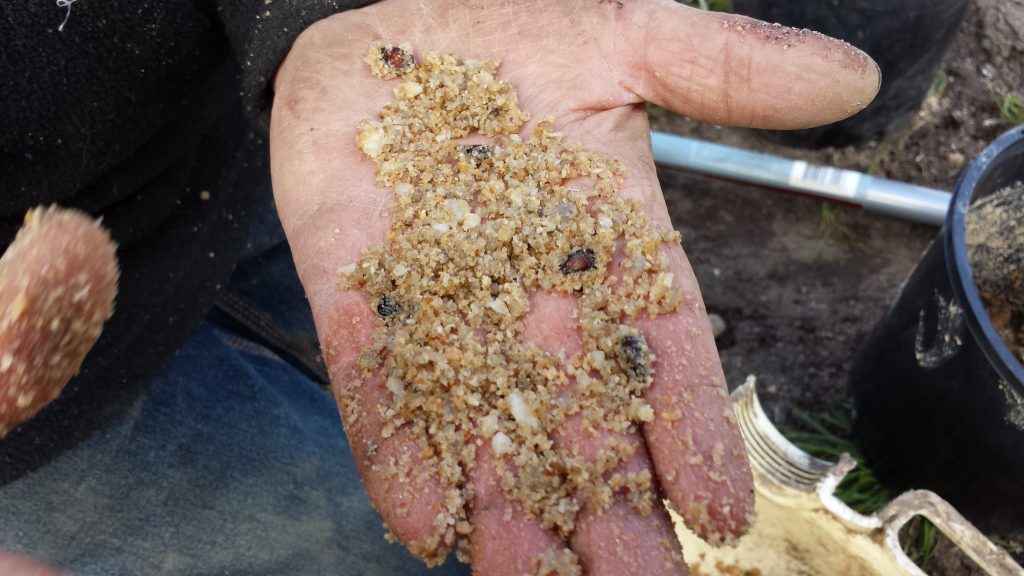
Spring jobs in the nursery
As soon as we’ve sold last year’s trees, we start preparing the soil for the new nursery patch. This is where we’ll plant the seed and cuttings to grow the trees we’ll be selling in two years.
Just before our saved apple, quince, pear, and peach seeds are about to shoot, it’s all hands on deck to plant them out.
The trees we’ll be selling next year are already well underway. It’s time to cut back the trees we budded last February, to the bud union.
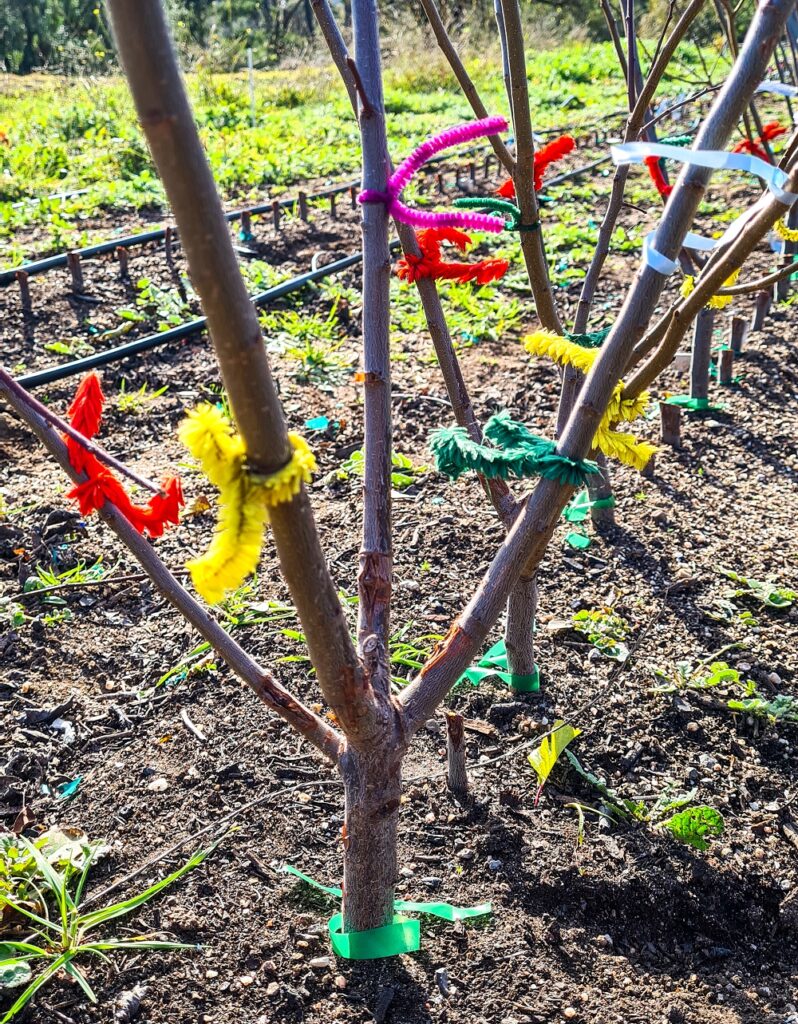
These trees with different colored pipe cleaners (in the pic above) are the plum rootstock we budded multiple varieties of plum and apricot onto.
The pipe cleaners are a great tool to help you remember which branch has which variety budded onto it. (We also highly recommend using labels, as well as writing down what you did!).
Soon it will be time to sow the green manure crop in the resting nursery patches.
The point is there are always lots of little jobs to do. Things take time, and the whole process takes patience. You may not know whether your grafting has worked for several months.
Grafting and growing your own trees doesn’t happen overnight, but unfolds over many seasons. Understanding that there are no quick rewards helps to give you the right mindset to develop the skills you need.
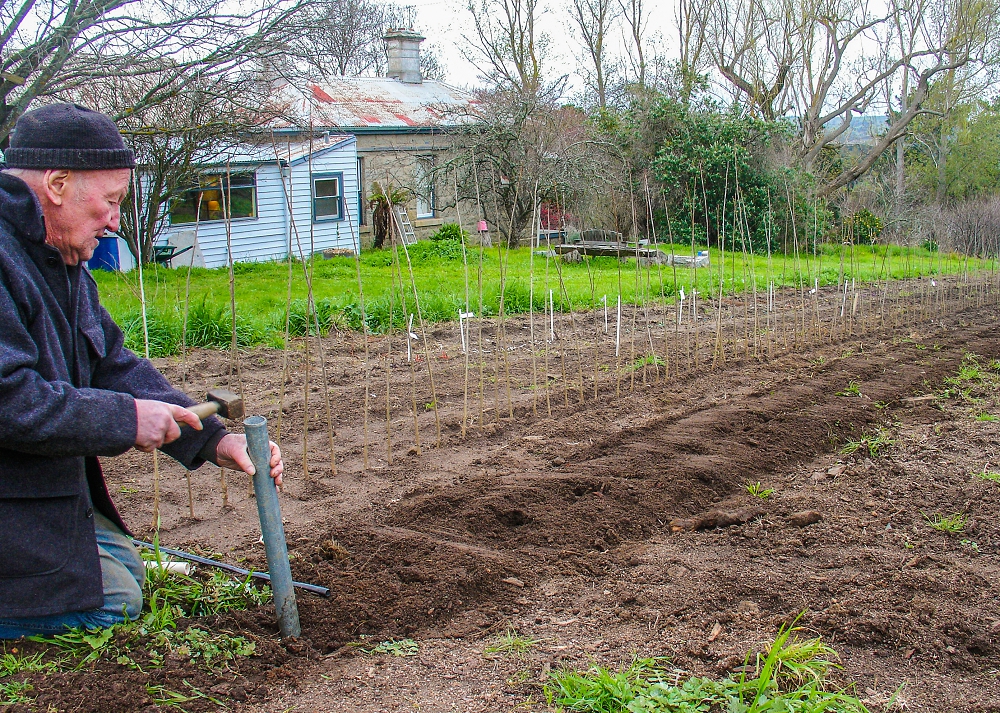
Set yourself up for grafting success by taking the long view
If you want to try grafting, it’s tempting to buy rootstocks from specialised rootstock nurseries. You usually do this in winter when they’re bare-rooted so that you can plant them in your garden just like you would a regular fruit tree.
But we don’t recommend this path for new grafters. It’s easy, and obviously much cheaper, to grow your own.
There’s nothing wrong with bought rootstocks, and we occasionally use them ourselves.
For example we use a technique called a ‘stool bed’. It’s a way of trench layering a ‘mother plant’ in order to grow multiple rootstock trees from a small number of ‘mothers’.
This lets us grow dwarf trees for example, or cherry rootstocks which don’t grow readily from seed.
So, why don’t we recommend that new grafters buy rootstocks?
Grafting is a fantastic hobby but realistically it can take quite a few attempts to start getting reliable results. Newbie grafters often get patchy results (or even complete failure) for their first few efforts.
This is only natural and a very common experience. Just like learning any new skill, it takes practice. But if you’ve paid for any of the materials (rootstocks or scion wood), it can quickly become expensive and disheartening.
If you’re working with completely free materials, on the other hand, it’s easier to give grafting a go. It takes the financial stress out of the equation.
Give grafting a go for free
Most of the rootstock we grow, except for cherries, citrus, and dwarfing apple rootstock, we have grown ourselves. We either collect seeds or take cuttings to create them, and it’s simple for you to do the same in your garden.
That way you can relax, and allow the process to unfold. See it simply as an exchange of your time for the acquisition of skills and experience.
As long as you stay open to the learning process, you’ll definitely get better over time. And like our nursery mentor Merv (Katie’s dad) always marvels, “it doesn’t cost you anything”!
There is a lot of time and care that goes into turning a seedling into a good fruiting tree, but Merv’s right, it doesn’t cost you anything to give grafting a go!

Related Articles
Growing fruit trees for free by root grafting
Did you know you can grow a whole new fruit tree from a piece of root, using a simple technique called root grafting?
How much are your fruit trees worth?
Fruit trees provide value in many ways, but you may be surprised to learn that the trees themselves can be worth thousands of dollars.
How to grow your own dwarf rootstocks
To grow your own dwarf fruit trees, first, you have to grow a dwarfing rootstock. Here’s an easy method to create an endless supply.

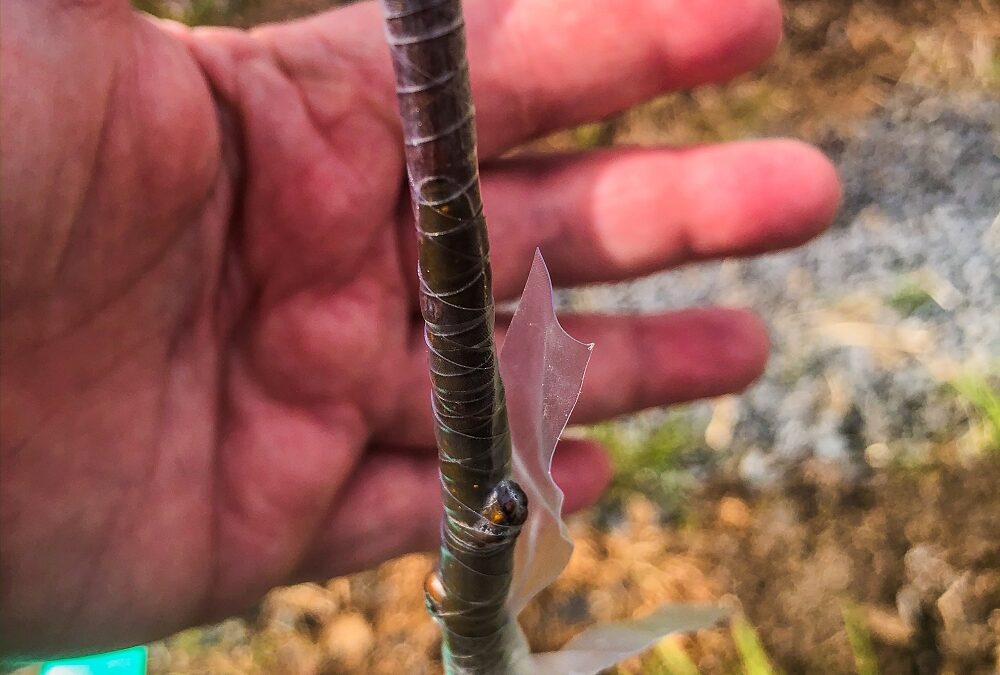

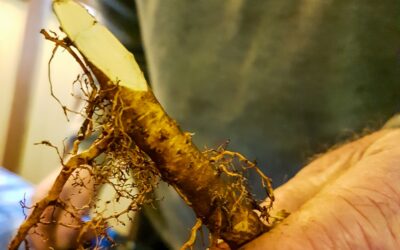
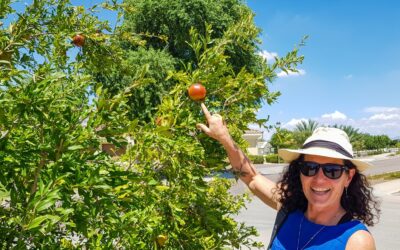
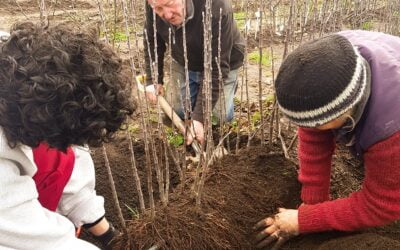


Hi I have been patient I had a seed the grew in the compost so I checked it out and it is a peach tree so I’m going to try grafting on it with some of my dwarf fruit trees that I have bought it see if I can add to my trees as you said it is free and you never know unless you try so here goes
Yes!! Go Karen!! Let us know how you go :). Generally if something is a ‘dwarf’, it’s actually the root stock that is dwarfing. But if you’re alright to have non-dwarfing trees, definitely have a go at grafting some of the cultivars you already have onto the seedlings you’ve started in the compost, you’ve got nothing to lose. Meg – GGF team.